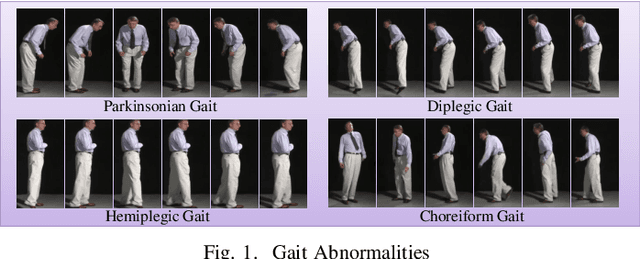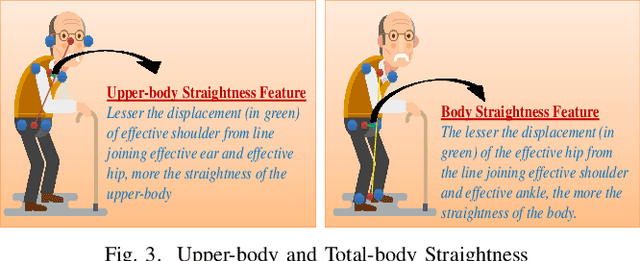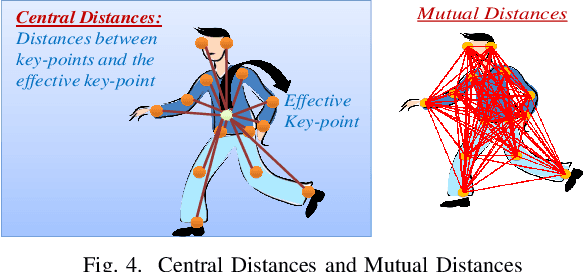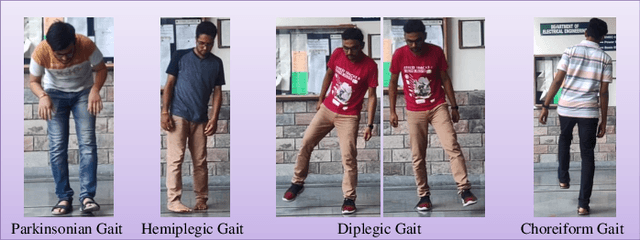Detection of Gait Abnormalities caused by Neurological Disorders
Paper and Code
Aug 16, 2020



In this paper, we leverage gait to potentially detect some of the important neurological disorders, namely Parkinson's disease, Diplegia, Hemiplegia, and Huntington's Chorea. Persons with these neurological disorders often have a very abnormal gait, which motivates us to target gait for their potential detection. Some of the abnormalities involve the circumduction of legs, forward-bending, involuntary movements, etc. To detect such abnormalities in gait, we develop gait features from the key-points of the human pose, namely shoulders, elbows, hips, knees, ankles, etc. To evaluate the effectiveness of our gait features in detecting the abnormalities related to these diseases, we build a synthetic video dataset of persons mimicking the gait of persons with such disorders, considering the difficulty in finding a sufficient number of people with these disorders. We name it \textit{NeuroSynGait} video dataset. Experiments demonstrated that our gait features were indeed successful in detecting these abnormalities.
 Add to Chrome
Add to Chrome Add to Firefox
Add to Firefox Add to Edge
Add to Edge